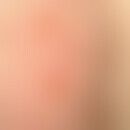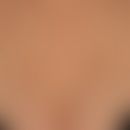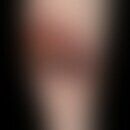Synonym(s)
Cullen Gangrene; Postoperative progressive skin gangrene; Progressive gangrenous ulceration of the abdominal wall; skin gangrene postoperative progressive; ulceration of the abdominal wall progressive gangrenous
HistoryThis section has been translated automatically.
Cullen, 1924
DefinitionThis section has been translated automatically.
Very rarely occurring after surgery or trauma, large, superficial necrosis of unclear cause, usually localized in the abdominal area.
You might also be interested in
EtiopathogenesisThis section has been translated automatically.
Mostly after local trauma or post-operative, possibly bacterial mixed infection.
ManifestationThis section has been translated automatically.
Possible at any age, androtrophy. Mostly in full health.
LocalizationThis section has been translated automatically.
Preferably abdominal area (e.g. starting from an appendectomy or sectio wound).
ClinicThis section has been translated automatically.
1-2 weeks after the operation inflammatory redness, blistery lifting of the epidermis, starting from the wound edges. Formation of an inexorably centrifugally expanding superficial necrosis, possibly eventually encompassing the entire surgical region. Temperature increase, circulatory instability.
Differential diagnosisThis section has been translated automatically.
External therapyThis section has been translated automatically.
For superficial weeping skin changes, moist compresses with antiseptic additives such as quinolinol (e.g. quinosol 1:1000) or R042, quinosol baths (1 g/l) or potassium permanganate baths. For deep necroses, wound cleansing, granulation promoting agents and sterile wound dressing. S.u. Wound treatment.
Internal therapyThis section has been translated automatically.
Glucocorticoids p.o. in medium dosage like prednisolone (e.g. Decortin H) 60-100 mg/day, slow reduction over months. Glucocorticoid savings through additional administration of azathioprine (e.g. Imurek) 100 mg/day. Alternatively test with Ciclosporin A (e.g. Sandimmun) 2.5-5 mg/kg bw/day p.o. Cave! Regular, monthly laboratory checks, accompanied by antibiotic protection according to an antibiogram.
Progression/forecastThis section has been translated automatically.
Healing with extensive scarring.
LiteratureThis section has been translated automatically.
- Born S et al (2001) Postoperative pyoderma gangrenosum. Surgeon 72: 1043-1047
- Cullen TS (1924) A progressively enlarging ulcer of abdominal wall involving the skin and fat, following drainage of an abdominal abscess apparently of appendiceal origin. Surg Gynecol Obstet 38: 579-582
- Grunewald AM et al (1992) Familial occurrence of the postoperative gangrene Cullen. Dermatologist 43: 795-797
- Long CC et al (1992) Minimizing the risk of post-operative pyoderma gangrenosum. Br J Dermatol 127: 45-48
- Schofer H et al (2002) Successful treatment of postoperative pyoderma gangrenosum with cyclosporin. J Eur Acad Dermatol Venereol 16: 148-151
Incoming links (6)
Cullen gangrene; Postoperative progressive skin gangrene; Pyoderma gangraenosum; Quinolinol sulphate monohydrate solution 0,1 % (nrf 11.127.); Skin gangrene, postoperative progressive; Ulceration of the abdominal wall, progressive gangrenous;Outgoing links (11)
Antibiogram; Antibiotics; Antiseptic; Azathioprine; Bubble; Ciclosporin a; Fasciitis necrotizing; Glucocorticosteroids systemic; Prednisolone; Pyoderma gangraenosum; ... Show allDisclaimer
Please ask your physician for a reliable diagnosis. This website is only meant as a reference.




